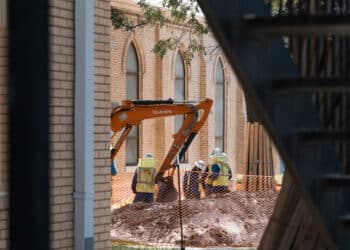Rental house acquisitions unleash financing opportunities
Rental penetration rate hit record 57% in Q1
Rental house acquisitions are creating a slew of large-ticket sales and low-risk financing opportunities for dealers and lenders.
The North American construction and general tool rental market is projected to grow 5.2% in 2025 to $87.5 billion, topping last year’s record of $83.3 billion, according to the American Rental Association. Rental penetration for U.S. construction and industrial equipment hit a record 57% in the first quarter, according to equipment market research firm EquipmentWatch.
Financing is crucial to rental companies’ success as they buy equipment to keep up with growing demand, Josh Nickell, chief executive of Atlanta-based Northside Tool Rental, told Equipment Finance News.
“It is much better for cash flow to finance equipment, and then you can grow faster. You can make money off somebody else’s money. Using debt financing is just really quite effective in this industry, as long as you don’t get carried away.”
— Josh Nickell, CEO, Northside Tool Rental
Rental house acquisitions present a “huge opportunity” for lenders looking to break into the market due to steady deal flow, large-ticket transactions and minimal risk, Nickell said, noting that rental companies “know what they’re doing when they’re managing assets.”
“There’s so many opportunities to partner with manufacturers or independent manufacturer reps or dealers as part of that process,” he said. “You can even, in a lot of cases, get somebody else who’s willing to put some skin in the game or help pitch for you, because they’ve already got that captive market.”
“You’ve got low risk, high volume and vendor partners.”
— Josh Nickell, CEO, Northside Tool Rental
Buying from dealers vs OEMs
Many equipment dealers sell frequently to local independent rental companies, Matthew Isgrig, a sales representative at Landmark Equipment in Fort Worth, Texas, told EFN.
Some rental houses “finance everything, and they’re making profit,” he said. “Their payment might be $1,700 and some change … and they’re turning around and renting the thing out for $5,000 a month.”
Buying from dealers is advantageous because “the local dealer is probably where you’re going to get parts, probably where you’re going to do your warranty service,” Northside Tool’s Nickell said.
However, most rental equipment, especially large and expensive equipment, is purchased directly from OEMs partly due to the incentives, partnerships and special floorplan deals that they offer, he said. Some special programs are still accessible through dealers, though, he said.
In addition, OEMs are able to offer attractive financing rates and warranties for new equipment, Drew Dobson, general manager at Kersey, Pa.-based GM Equipment Rentals, told EFN.
“If you do buy a used piece, it’s going to be cheaper, but it’s going to not only come with hours, but also probably a higher interest rate based off a line of credit or something,” he said.
Using brokers to acquire equipment is also beneficial due to their reliability and sources across the industry, Dobson said.
The ABL advantage
In some cases, dealers and OEMs may have preferred lending partners outside of captives to arrange financing for rental companies, Nickell said. Depending on the borrower and equipment type, these lenders have varying requirements regarding monthly payments and minimum ticket size, he said.
Thus, asset-backed loans could be the best option for rental houses looking to purchase a range of equipment types, he said. For example, taking out multiple loans for different pieces of equipment means more monthly payments and term requirements to keep track of, whereas an ABL “allows me to just kind of flex in and out.”
ABLs can benefit businesses by providing flexible working capital, supporting mixed collateral and allowing higher borrowing costs, with an option to purchase equipment as needed.
“It’s more effective, but usually you have to do larger volumes to be accessible to a typical ABL,” Nickell said.
Check out our exclusive industry data here.









